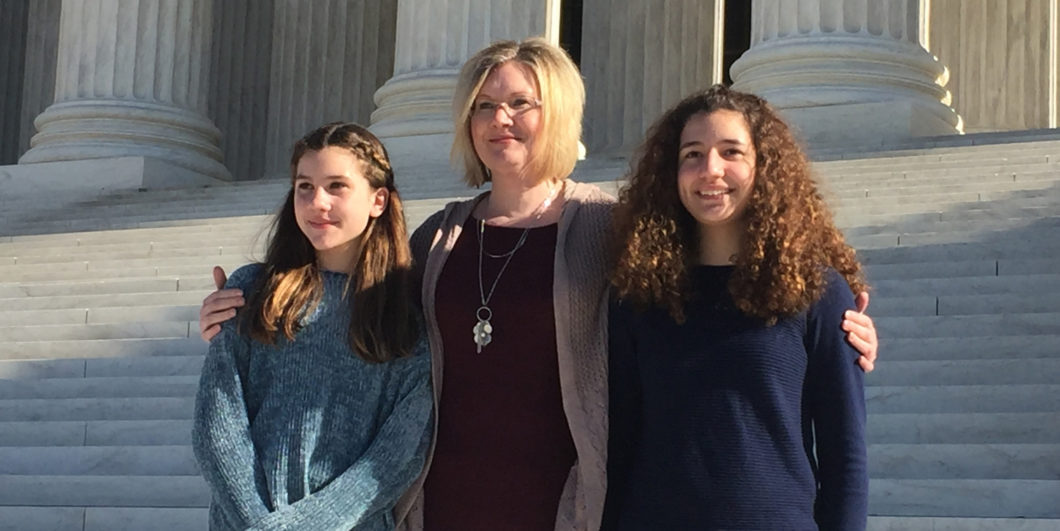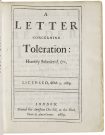Defending Religious Liberty Without the Constitution?
For conservatives this term of the Supreme Court has been near traumatic, relieved only by the decision a week ago in support of the religious in Montana (Kendra Espoinoza v. Montana Department of Revenue). The conservative block of judges held together in a rare show of cohesion these days to strike down one of the old “Blaine Laws” in the States to bar financial aid to “sectarian” (read: mainly Catholic) schools. In this case, three mothers sought to make use of a scholarship program, funded by tax credits, to place their children in a private Christian school. The Court has cleared the way, but what should not go unnoticed is that the Court has lifted now, to a standing of high level in our jurisprudence, a principle that finds no mention in the text of the Constitution.
The common sense of the matter, which some of us, may I say, have been pressing for 30 years, was expressed by Chief Justice Roberts in this way: “A State need not subsidize private education. But once it decides to do so, it cannot disqualify some private schools solely because they are religious.” And yet no conservative on the Court was moved to speak those simple lines almost thirty years ago when young James Zobrest in Arizona was denied the provision of an interpreter when he transferred from a public school to a private Catholic school, even though that benefit flowed to him under the laws of Arizona and the United States. Nor did Chief Justice Rehnquist accept the force of that principle in 2004 when Joshua Davey was denied a scholarship in Washington State solely because he was seeking to enter a program for the training of religious ministers. Curiously, it was Justice Scalia who dissented in that case because the decision to withhold this benefit from Davey pivoted solely, decisively on his religious interests. It was a distinct disability attached to the religious. As Scalia pointed out:
[the State of Washington] has created a generally available public benefit, whose receipt is conditioned only on academic performance, income, and attendance at an accredited school. It has then carved out a solitary course of study for exclusion: theology. … No field of study but religion is singled out for disfavor in this fashion.
The Court did not come down on Scalia’s side until just three years ago in the case of Trinity Lutheran Church v. Comer: a religious school was denied funds for the repaving of its playground, funds that would flow to any public school under the laws of Missouri. But what clause of the Constitution was involved? This was not a matter of a “religious test” for office under the United States (Art VI, par. 3). And as the liberals argued in these cases—including the case from Montana—the case did not involve the Free Exercise Clause of the First Amendment: the refusal of the State to fund schooling for Josh Davey or the children in Montana did not impair in any way their freedom to worship and attend church. John Roberts thought that a rather crimped view of free exercise, for the parents in Montana thought a religious school critical to shaping the Christian character of their children. And that is where he had to put the accent in his argument, because Ruth Ginsburg largely knocked out that simple, straightforward principle that he had been lifting to high standing: As Ginsburg pointed out, when the Supreme Court of Montana struck down this program covering religious schools, it struck down the whole program, for public and non-religious schools as well. It was no longer a matter of denying to the religious what was given to all others.
At this moment, something else needed to be said by the conservatives on what was thoroughly legitimate and rightful about the cultivation and support of religion in a republic. Justice Breyer posed the challenge from the liberal side when he invoked the Establishment Clause of the First Amendment and the familiar concern about forcing taxpayers to pay for religious teaching they found objectionable and divisive. But there are many people who would find it even more divisive and objectionable to be forced to pay for other people to have transgender surgeries, supplies of Viagra, or force the Little Sisters of the Poor to supply contraceptives. And as Justice Scalia used to point out, religion is one of the most powerful unifying forces in the country, connecting people across the lines of class and ethnicity.
The notion of “religion” utterly bereft of grounds of moral judgment could hardly be reconciled with the God of the Declaration of Independence; it could not be part of any Original Understanding.
Still, against the lingering aversion to religion in liberal sentiment the conservatives needed to say something to explain what was “good” about the support of religion. Justice Alito didn’t take that route because he wished to point out that the “Blaine Amendments” found their origin in a fierce anti-Catholic bigotry in the 19th century. Just a bit earlier in the term he had sought to defend the provision for non-unanimous juries in Louisiana, when his colleagues insisted that the policy was tainted by its racist origins. Alito thought that the policy was still defensible on its own terms as the racist origins had faded away. “But I lost,” he said, and “if the original motivation for the laws mattered there [in the Ramos case], it certainly matters here.” He would not then turn to making the case for the good of religion and the legitimacy of supporting it. And the melancholy truth was that, by this point, the Court had made its way to a teaching of relativism on religion. As Alito and Gorsuch had written, in the famous case of the Masterpiece baker:
Just as it is the “proudest boast of our free speech jurisprudence” that we protect speech that we hate, it must be the proudest boast of our free exercise jurisprudence that we protect religious beliefs that we find offensive.
In other words, there can be nothing said or taught under the banner of “religion” that can be judged as so wrongful or illegitimate that it is beyond the protection of the law. With that sense of things, it offers no surprise any longer that when the Court, in 2014, cleared the way for prayers or benedictions in legislative assemblies, we’ve seen benedictions given now by “ministers” of the Church of the Flying Spaghetti Monster. And yet even more: that decision, in Town of Greece v. Galloway, has set off a virtual growth industry for Satanists in giving invocations and benedictions. But no plausible understanding of religion in this country can possibly be reconciled with Satanism or the affirmation of radical evil.
If we recall again the words of James Madison in his famous Remonstrance Against Religious Assessments in Virginia (1785), Madison understood religion as “the Duty we owe to the Creator and the manner of discharging it.” That God was the Author of the Laws of Nature, including the moral laws. There is no understanding of God and religion more bound up with the American laws from the beginning. The notion of “religion” utterly bereft of grounds of moral judgment could hardly be reconciled with the God of the Declaration of Independence; it could not be part of any Original Understanding.
The holdings of the Court have given us an understanding of religion quite detached now from the G-word (the God of Jews and Christians), that Creator who endowed with “rights”—and duties, as Madison said. A sense, in other words, of rights and wrongs—and the capacity to know the difference. But with these moves, the Court has detached itself also from any moral test for the legitimacy of its own teaching. The lawyer Gunnar Gundersen added the finishing point: On the ground of this moral relativism, there is no longer a ground on which to make the case for the “goodness” of religion—or to justify the exertions of the law to defend religion as a “good” to be protected and promoted in our public life.
The Court managed this week to get something right on religion and the law, but in running true to form these days, it has given us a wondrous construction without quite explaining to us what it all rests upon.


